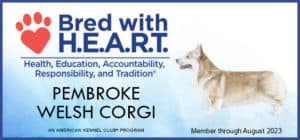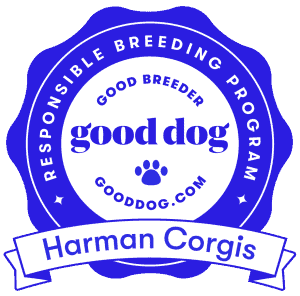Home » Intervertebral Disc Disease (IVDD)
Genetic diseases with simple modes of inheritance
Intervertebral Disc Disease - Type 1 (IVDD - Type 1)
A little background info first
Corgis are a dwarf or chondrodysplasia breed. Their shortened leg bones is due to mutations in two chromosomes – 12 and 18.
Dogs that have the mutation on chromosome 18 will have shortener legs than normal dogs. Dogs that have mutations on both chromosomes will even have shorter legs like those of Corgis.
Here is where the problem comes in, the mutation on chromosome 12 (FGF4) is linked to IVDD therefore if a dog has this mutation on chromosome 12 they have shorter legs but they also have a higher risk on developing IVDD.
As long as a dog has at least one copy of this mutation they are at risk for IVDD. Having 2 copies does not increase the risk however it does result in shorter legs.
What is Type 1 - IVDD?
IVDD is a back or spine issue where discs in the back rupture or bulges and applies pressure on the spinal cord.
What are the symptoms?
Dogs with IVDD experience pain in their back and neck, may have an abnormal gait, loss of balance and may experience weakness in their rear legs or paralysis.
Is there a treatment?
IVDD is treated based upon severity. Treatment might include rest and pain management or it might require surgery.
Genetic testing & our breeding program
Since breed standards state that the Pembroke must have short legs, all modern Corgis should have at least one copy of the FGF4 mutation on chromosome 12.
Our Corgis are no exception, all have at least one copy of this mutation on chromosome 12.
How does the environment play a role?
Dogs with at least one copy of the FGF4 mutation have a increase risk of developing IVDD but most Corgis never develop this disease.
Environmental factors play a HUGE role in determining if a dog who is at risk will actually develop IVDD. By taking a few precautions you can reduce the risk of your dog developing IVDD.
These environmental factors include:
Diet
Feeding a high quality dog food has been shown to reduce IVDD and hip dysplasia. We recommend that you consult with your veterinarian about what dog food they recommend. Unfortunately there are only 3 dog food companies that actually perform research on their foods. We feed and recommend Purina Pro Plan which is research based.
Weight management
Weight should be kept in check to prevent extra stress on the spine.
Exercise
Exercise helps build strong muscles, tendons and ligaments however, taking care to not over exercise is critical. A well planned exercise program should start in puppyhood. We always send home a booklet that outlines age appropriate exercise with our puppy buyers.
Also taking care to make sure that puppies do not play too hard with other puppies or dogs is critical.
Minimize jumping off furniture
Jumping off furniture or other objects higher than the dog’s shoulder applies extra stress to the back and skeleton and may herniate discs. Training your dog to use a ramp to get onto and off of furniture is much safer and does not apply stress to the skeleton.
Walk with a harness rather that a leash
Walking your dog with a harness reduces stress on the vertebra of the neck.





